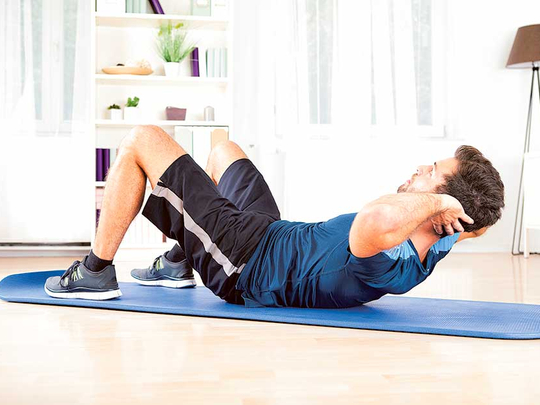
Last year, I wrote a column arguing that evidence shows that diet, not exercise, is the key to weight loss. Since then, I have been troubled at how some readers have taken this to mean that exercise therefore has no value.
Nothing could be further from the truth. Of all the things we as physicians can recommend for health, few provide as much benefit as physical activity.
In 2015, the Academy of Medical Royal Colleges put out a report calling exercise a “miracle cure”. This isn’t one of those things with just some cohort or case-control studies behind it, either. There are many, many randomised controlled trials. A huge meta-analysis examined the effect of exercise therapy on outcomes in people with chronic diseases.
Let’s start with musculoskeletal diseases. Researchers found 32 trials looking specifically at the effect of exercise on pain and function of patients with osteoarthritis of the knee alone. That’s incredibly specific, and it’s impressive so much research has focused on this one topic. Exercise improved those outcomes. Ten more studies showed, overall, that exercise therapy increases aerobic capacity and muscle strength in patients with rheumatoid arthritis. Other studies proved its benefits in other musculoskeletal conditions, such as ankylosing spondylitis, and even some types of back pain.
For people (mostly middle-aged men) who had had a heart attack, exercise therapy reduced all causes of mortality by 27 per cent and cardiac mortality by 31 per cent. Fourteen additional controlled trials showed physiological benefits in those with heart failure. Exercise also has been shown to lower blood pressure in patients with hypertension, and improve cholesterol and triglyceride levels.
People with diabetes who exercise have lower Hba1c values, which is the marker of blood sugar control, low enough to probably reduce the risk of complications from the disease. Twenty randomised controlled trials have showed that patients with chronic obstructive pulmonary disease can walk farther and function better if they exercise.
Multiple studies have found that exercise improves physical function and health-related quality of life in people who have Parkinson’s disease. Six more studies showed that exercise improves muscle power and mobility-related activities in people with multiple sclerosis. It even appeared to improve those patients’ moods.
The overall results of 23 randomised controlled trials showed that exercise most likely improves the symptoms of depression. Five others appear to show that it improves symptoms in patients with chronic fatigue syndrome. In trials, exercise even lessened fatigue in patients who are undergoing therapy for cancer.
What other intervention can claim results such as these?
Even studies of older, hospitalised patients show a beneficial effect from multidisciplinary interventions that include exercise. Those randomised to such interventions in the hospital were more likely to be discharged to go home, and to spend less time in the hospital over all — and at a lower cost.
While we don’t think of it this way, you can make a pretty good argument that exercise is as good as drugs for many conditions. A 2013 meta-analysis of meta-analyses (that’s how much data we have) combined and analysed the results from 16 reviews of randomised controlled trials of drug and exercise interventions in reducing mortality. Collectively, these included 305 trials with almost 340,000 participants.
Diuretic drugs (but not all drugs) were shown to be superior to exercise in preventing death from heart failure. But exercise was found to be equally good as drugs in preventing mortality from coronary heart disease. Exercise was better than drugs in preventing death among patients from strokes.
Many people will be surprised at how little you need to do to achieve these results. Years ago, in an effort to get in shape, I tried the P90X routine. It proved too hard for me. Later, when I tried Insanity, it beat me so badly that people at work kept asking me if I was ill. Two years ago, I tried P90X3. It was a bit more manageable, but I still couldn’t keep it up.
I’m not alone in thinking that physical activity to improve health should be hard. When I hear friends talk about exercising, they discuss running marathons, participating in cross-fit classes or sacrificing themselves on the altar of Soul Cycle. That misses the point, unfortunately. All of these are way, way more than you need to do to get the benefits I’ve already described.
The recommendations for exercise are 150 minutes per week of moderate intensity physical activity for adults, or about 30 minutes each weekday.
Moderate intensity is probably much less than you think. Walking briskly, at 5 to 6 kilometres per hour or so, qualifies. So does bicycling slower than 16 kilometres per hour. Anything that gets your heart rate somewhere between 110 and 140 beats per minute is enough. Even vacuuming, mowing the lawn or actively walking your dog might qualify.
Today, my goals are much more modest. Trekking from my office to the clinic and back again gives me 30 minutes of exercise. Or, I walk to the supermarket from my office to grab lunch, at about two kilometres mile each way. In colder weather, I spend half an hour on the elliptical machine. Doing this five days a week gets me the activity I need.
While it feels as if there’s nothing we can do to change people’s behaviour, evidence exists to the contrary. A systematic review and meta-analysis of advice and counselling by health professionals found that promotion of physical activity works. Doctors and clinics that made efforts to promote exercise to patients needed to engage 12 adults on the subject in order to get one additional adult to meet recommended levels of activity one year later. That might not sound impressive, but it’s one of the best measures of “number needed to treat” that I’ve presented at The Upshot.
After the Academy of Medical Royal Colleges wrote its report, an editorial in the “BMJ”, a prominent medical journal, countered that exercise wasn’t a “miracle cure”. Instead, the authors argued it was “the best buy for public health”.
If that’s the best “counterpoint”, then physical activity seems like a no-brainer.
–New York Times News Service
Aaron E. Carroll is a professor of paediatrics at Indiana University School of Medicine.













